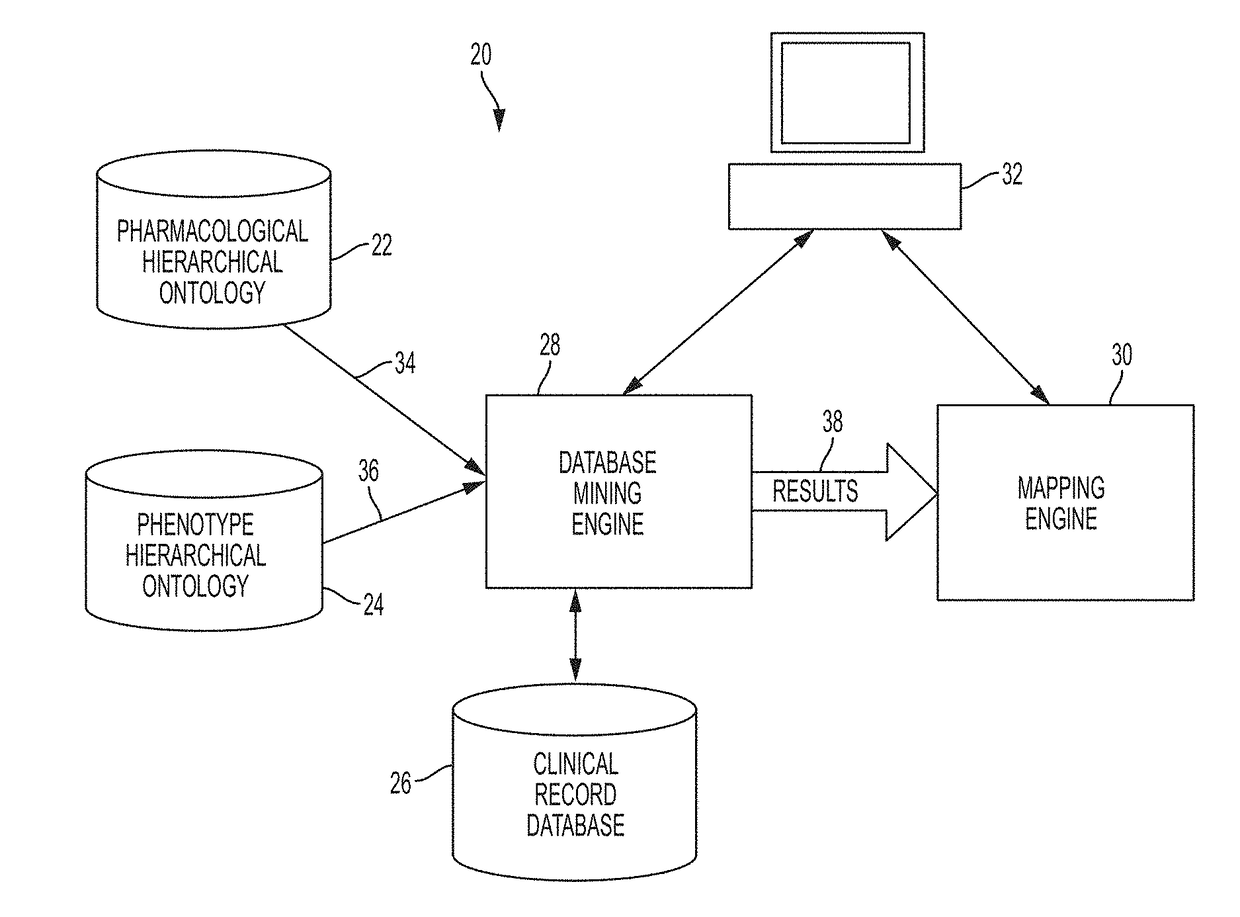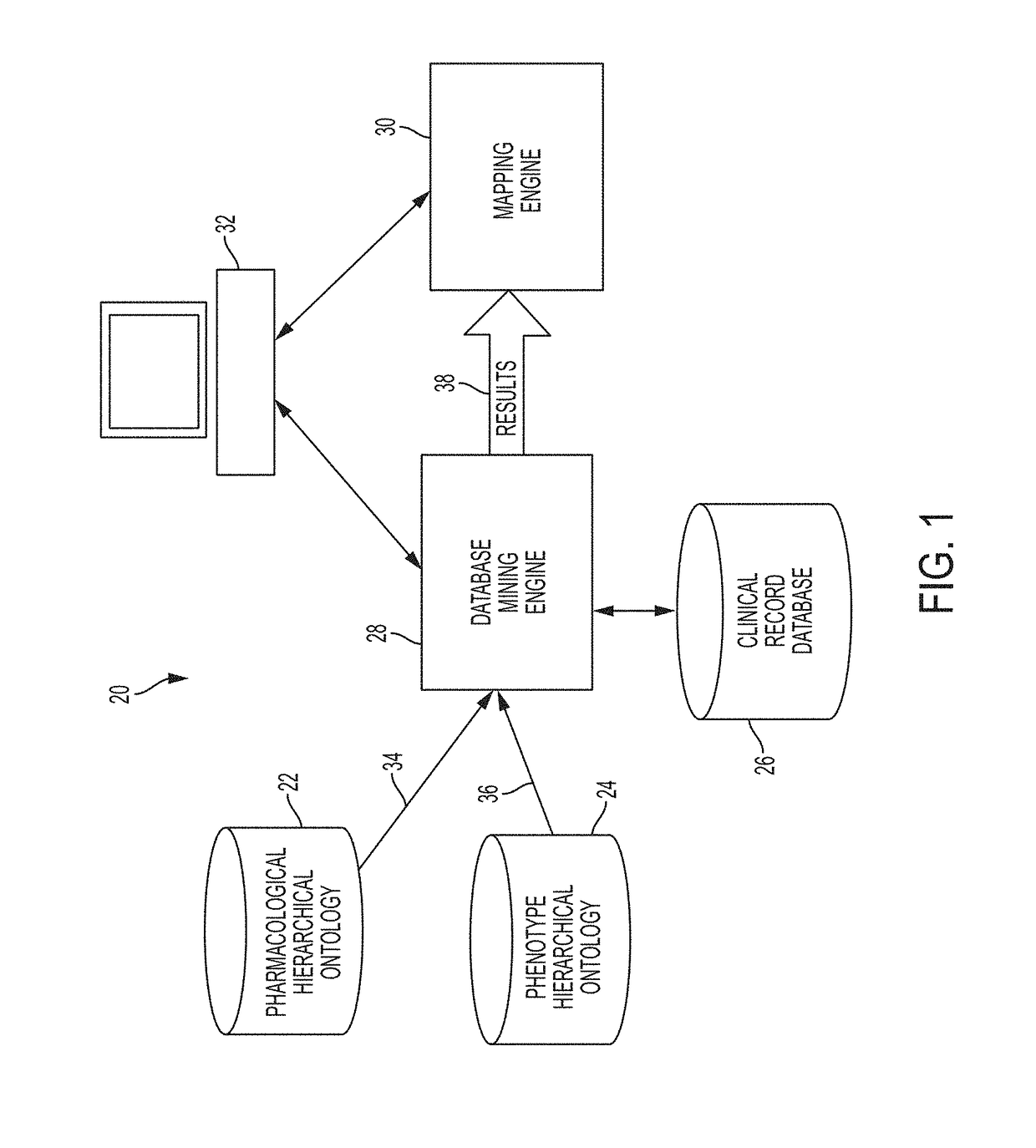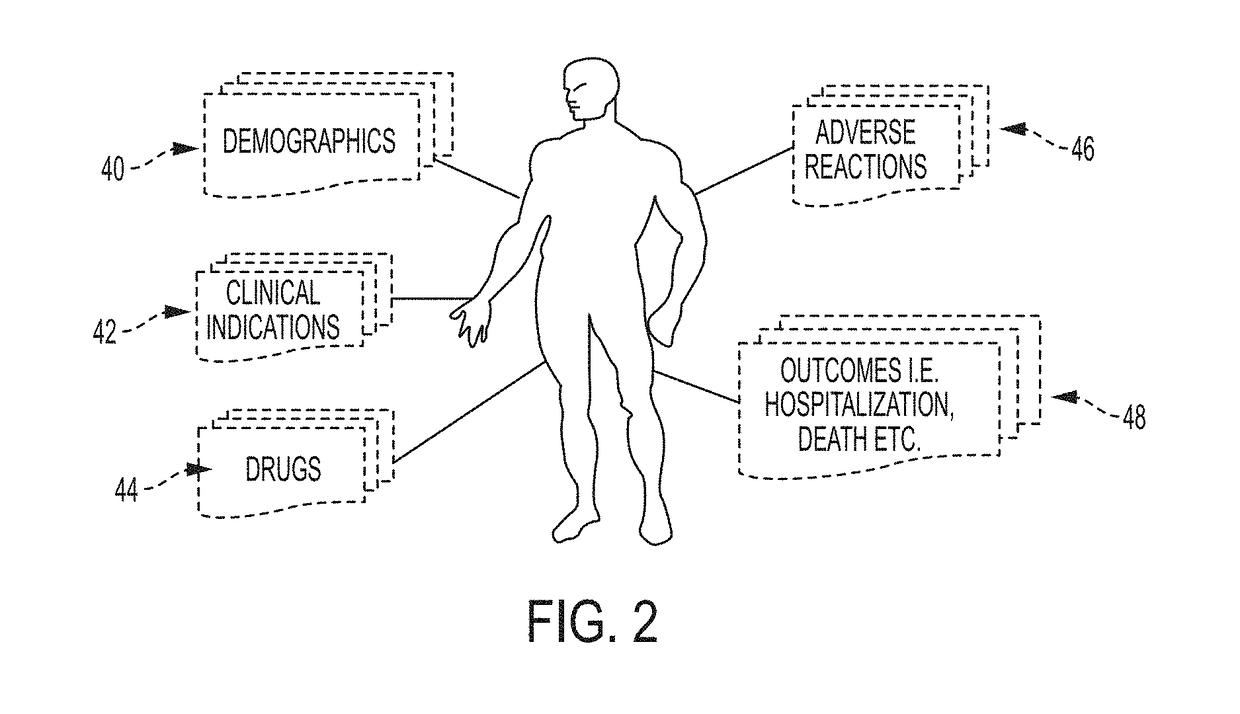System and Method for Data Mining Very Large Drugs and Clinical Effects Databases
a data mining and database technology, applied in the field of bioinformatics, pharmacoinformatics, and pharmacovigilance, can solve the problems of patient safety concerns, possible withdrawal of drugs, and high risk of drug-drug interactions, and achieve simple and unobtrusive graphing capability, facilitate high-resolution analyses
- Summary
- Abstract
- Description
- Claims
- Application Information
AI Technical Summary
Benefits of technology
Problems solved by technology
Method used
Image
Examples
example 1
oxicity, Known Drug-Interactions, and Novel Drugs that can Potentially Minimize Lithium-Associated Toxicity
[0137]Low therapeutic index drugs, such as lithium, are known to be widely associated with clinically significant adverse interactions, and the present inventors sought to determine if pharmacologically unrelated agents that differ in mechanism of action and therapeutic category can be used in combination with lithium to mitigate the risks of adverse events resulting from lithium toxicity. A low therapeutic index indicates that a drug possesses a small difference between an effective and lethal dosage and a relatively small increase in the blood levels due to decrease in metabolism or drug excretion can lead to potentially lethal adverse events. Lithium, a mainstay drug in the treatment of bipolar disorder, is a potentially interacting drug with a low therapeutic index, becomes widely distributed in the central nervous system (CNS) and interacts with a number of neurotransmitte...
example 2
and Glucocorticoids in the Treatment of TNF-Elevated Disorders Exacerbate Pulmonary Complications
[0141]TNF-elevated clinical indications are characterized by higher levels of pro-inflammatory cytokines, especially TNFα, known for its role in the pathogenesis of autoimmune and inflammatory disorders, host defense mechanisms and initiating response to local injury. However, in excess, TNFα leads to inappropriate inflammation and consequent tissue damage, which may explain the increased probability of tissue injury in patients with autoimmune and immunoinflammatory disorders. Anti-TNF drugs are typically used in the treatment of TNF-elevated disorders, but they are frequently associated with serious adverse effects, necessitating an improved understanding of individual factors that determine efficacy and safety of anti-TNF agents. The inventors used AERSMine to stratify patient subgroups based on anti-TNF-associated adverse events and identify drug combinations that exhibit specificall...
example 3
in Receptor Blockers (“ARBs”) to Minimize the Progression of Neurological Disorders
[0145]In this example, the inventors analyzed 5.9 million patients using AERSMine. The inventors, through AERSMine, were able to realize and visualize the apparent beneficial effect of ARBs on minimizing aggression, irritability, and other mental-related adverse events. This is a heretofore unknown characteristic of ARBs. The inventors hypothesized that ARBs may be particularly useful to patients known to suffer from such mental-related adverse events, such as patients on antipsychotics.
[0146]To this end, the inventors utilized AERSMine and selected for patient reports listing both angiotensin receptors and antipsychotics. The results are very promising when ARBs are added to the therapeutic regimen of patients who are on antipsychotics. A sample of results is displayed in FIGS. 26, 27, 28, and 29. The results strongly suggest that ARBs can be used to minimize the progression of mental deterioration, ...
PUM
 Login to View More
Login to View More Abstract
Description
Claims
Application Information
 Login to View More
Login to View More - R&D
- Intellectual Property
- Life Sciences
- Materials
- Tech Scout
- Unparalleled Data Quality
- Higher Quality Content
- 60% Fewer Hallucinations
Browse by: Latest US Patents, China's latest patents, Technical Efficacy Thesaurus, Application Domain, Technology Topic, Popular Technical Reports.
© 2025 PatSnap. All rights reserved.Legal|Privacy policy|Modern Slavery Act Transparency Statement|Sitemap|About US| Contact US: help@patsnap.com



